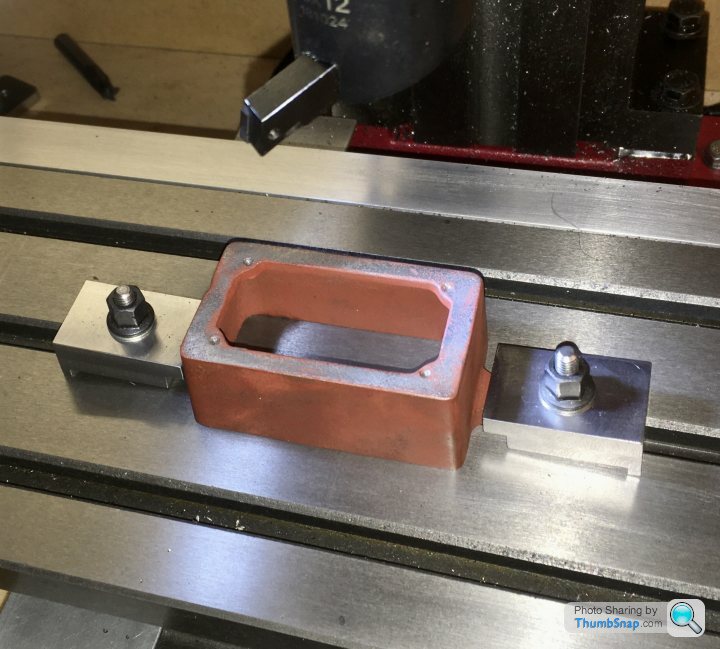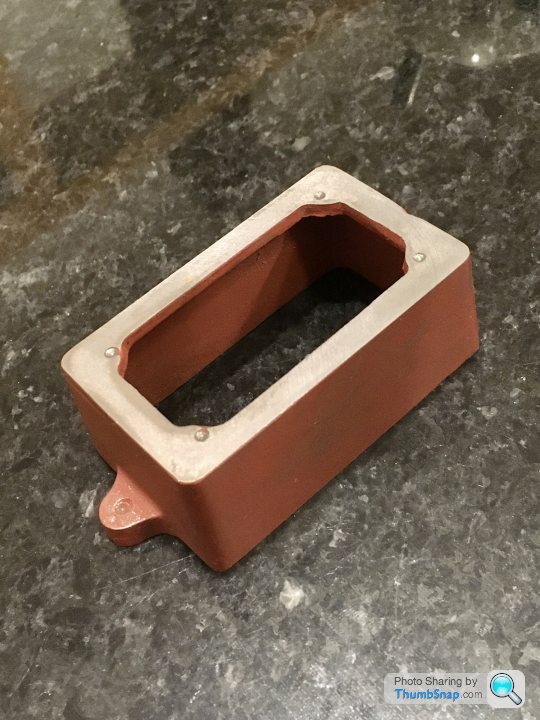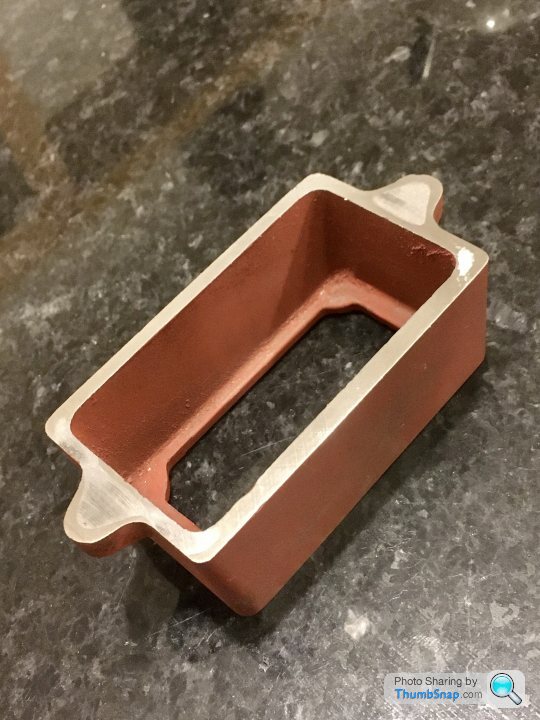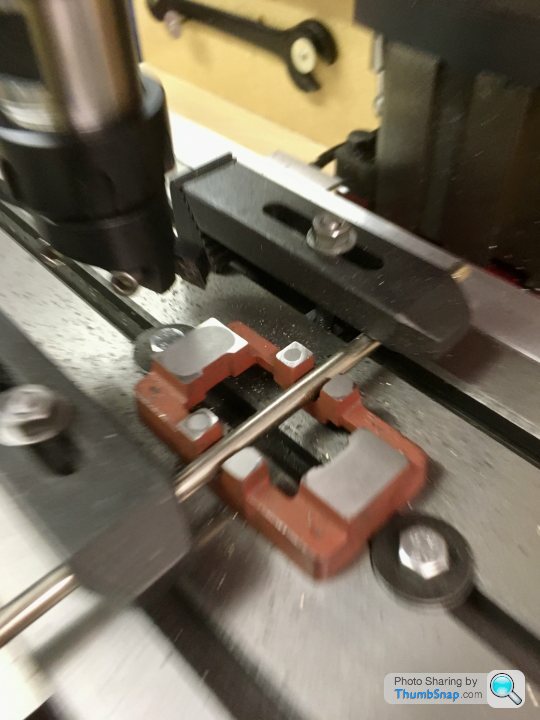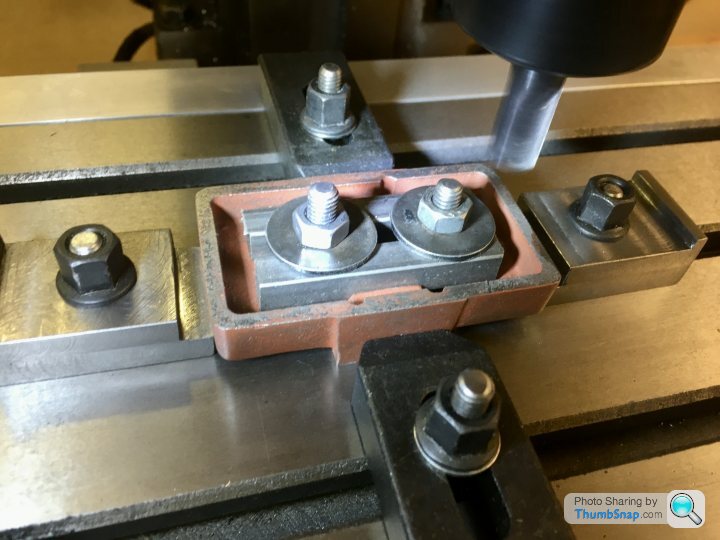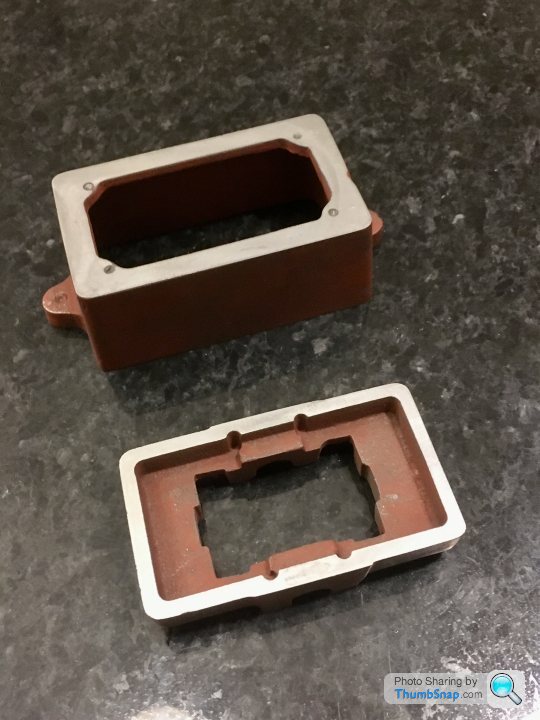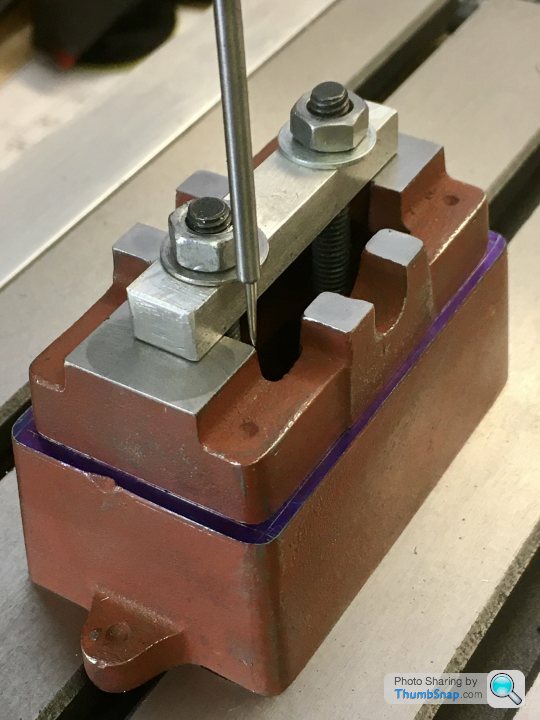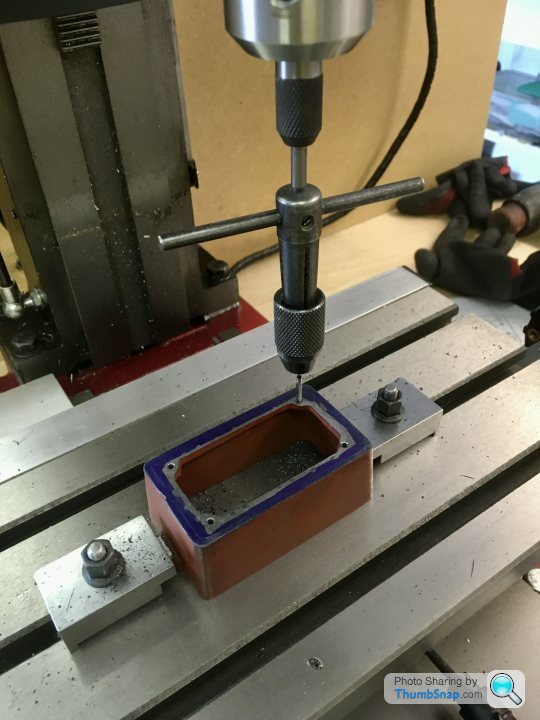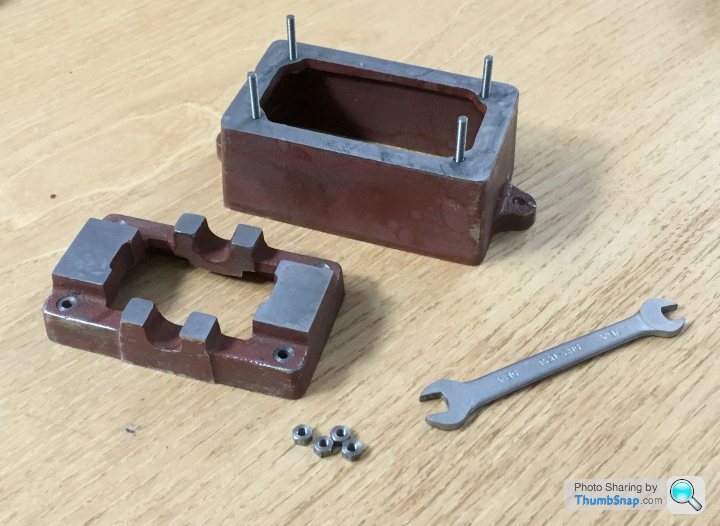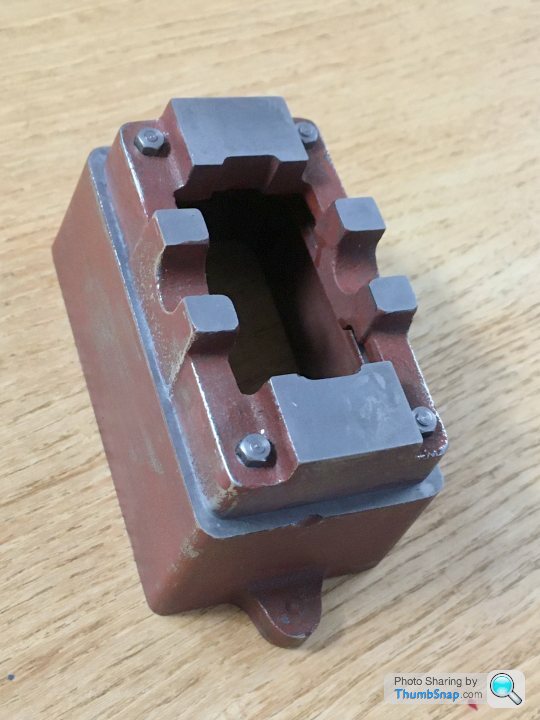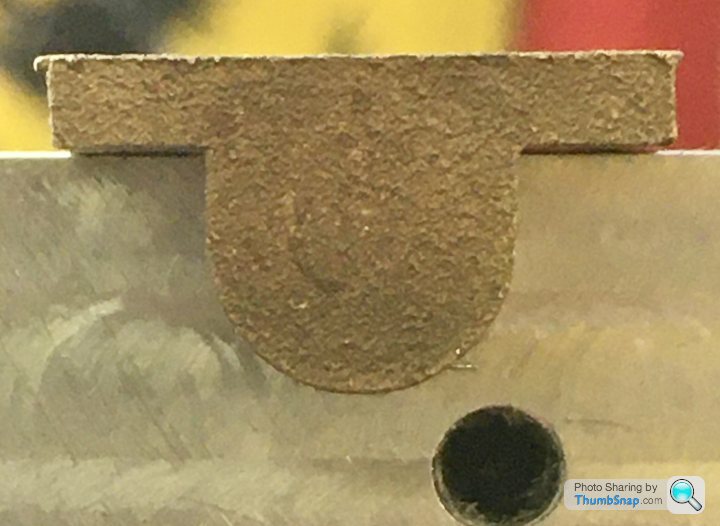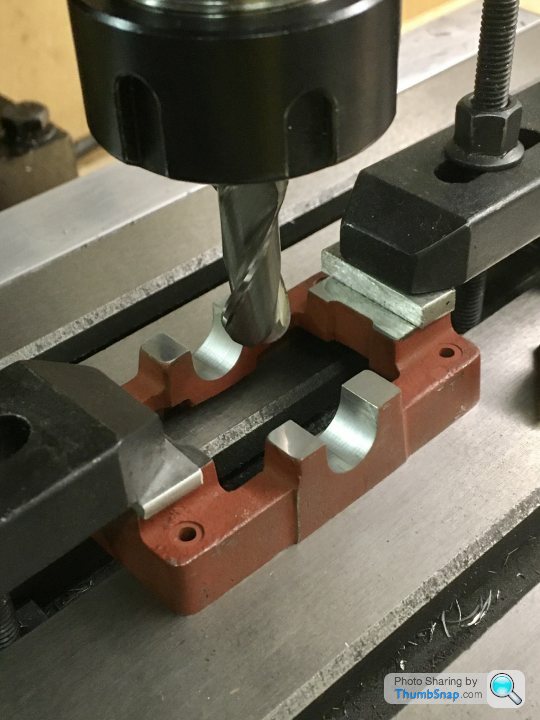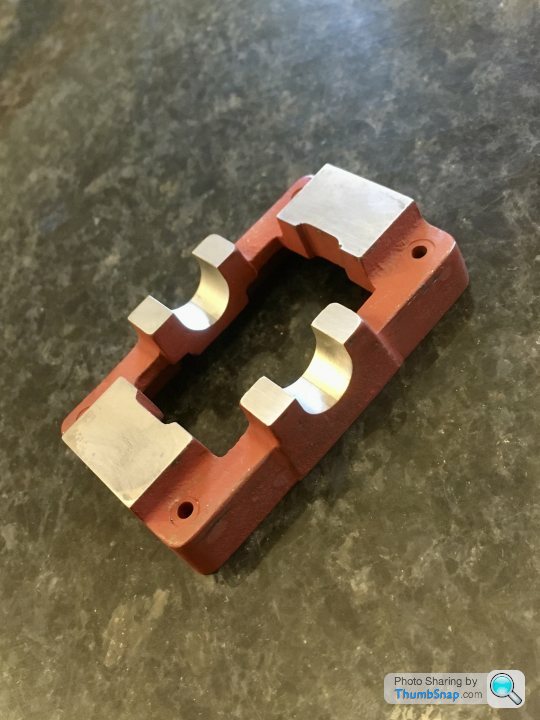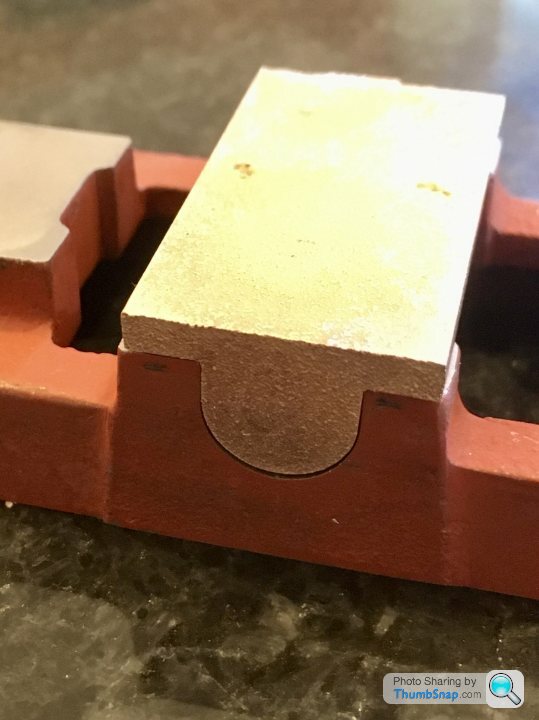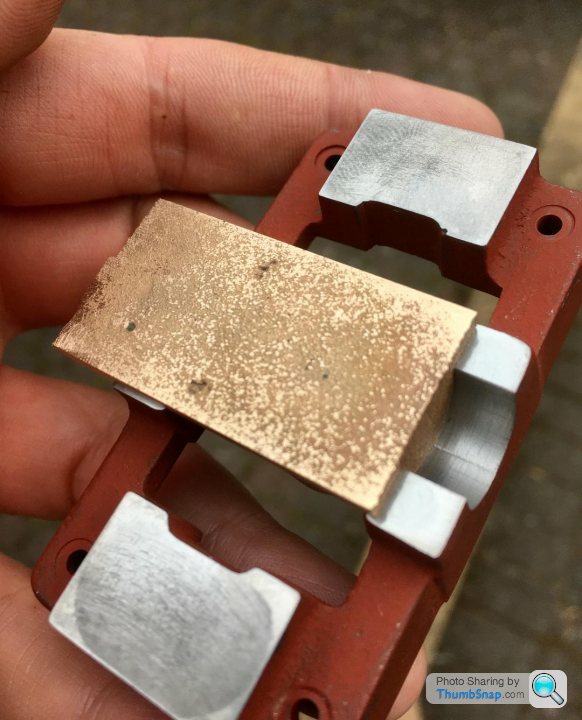Hello All.
I am a complete novice, so this will not be a step-by-step account of building a Stuart 10V; there are plently of books, threads and videos out there already. I hope that what I post will promp some much needed advice. I will make mistakes, but I will get there in the end.
This is the begining of what will inevitably be a long journey for me. I have a Myford ML7 which I restored about 12 years ago, but have only done simple jobs with it. I bought an SX2P mini mill last Septemebr, and have mildy tweaked it with some common upgrades over the past few weeks. I am in the process of making some vice clamps for it – the first things I've ever milled (not counting some workshop practice at university many years ago).
I have always liked scale model building, and steam engines, so I bought this kit at the Doncaster show last year, and vowed to make a start within a year. Today was the anniversary of getting the kit, so I made a start.
Despite getting excellent advice over the past few days from the "Beginners" section on here, I’m still not confident enough to use the milling machine on a casting; I want to try different tooling and techniques first, on the remaining two vice clamps.
Anyway, first job was cleaning up the box base and sole plate casting using files, and abrasive paper on a surface plate:



I don’t have a vernier height gauge, so I did a quick check with a height scriber and my digital callipers:

The box bed seemed pretty much spot on, so just needs a few clean-up passes. The sole plate had an approx. 0.3mm high spot at one end, but that will disappear when it’s machined to the correct height.
I made a clamp plate for the box bed out of some unhardened tool steel. I face-milled the long sides, and tried side-milling the short edges, but it didn’t work out well at all. Side milling was pretty hopeless on the first two vice clamps too. No idea why. Ended up mounting on its ends and end milling those too. I used my edge finder and DRO’s to get the hole positions. A bit OTT for a simple fixture, but I need as much practice as I can get:


I’ll clamp the sole plate using an old screwdriver and various clamps to keep it in place:

I'm waiting for some end mills and a fly cutter, which I'll try out on the remaining two vice clamps. Hopefully then I will have enough courage to try a casting.
Cheers!
Dr_GMJN.


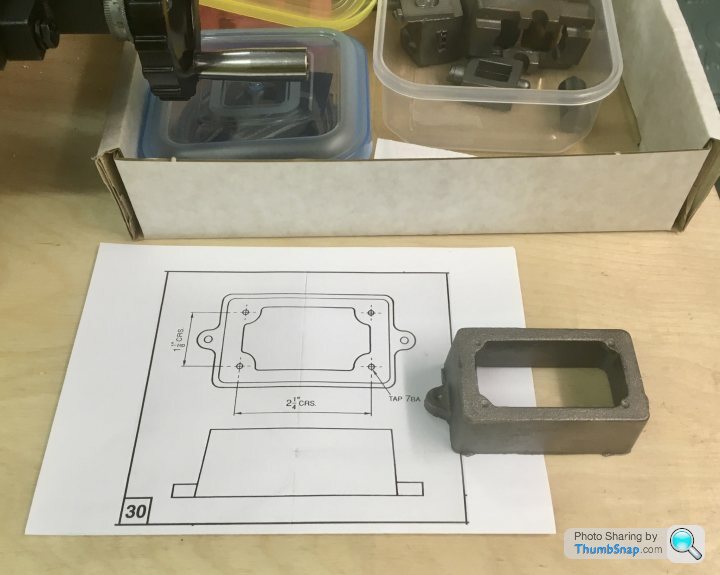
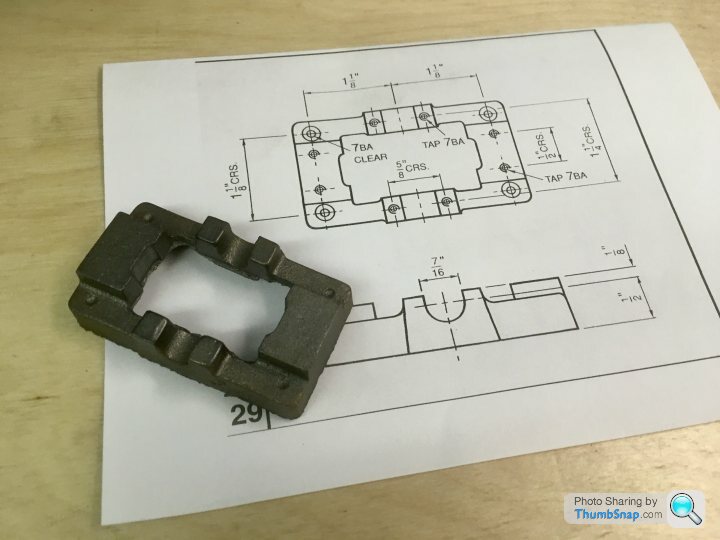
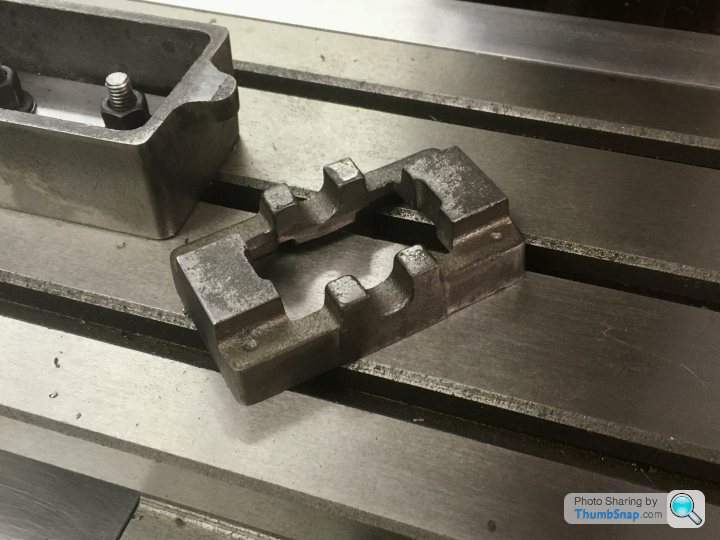
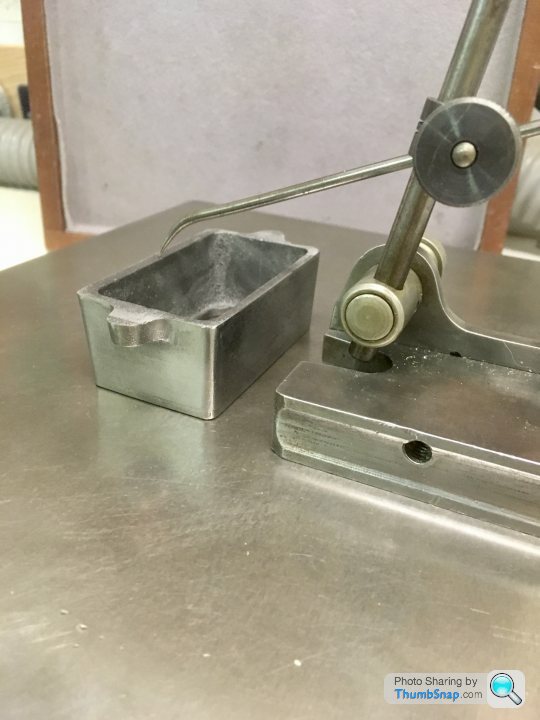

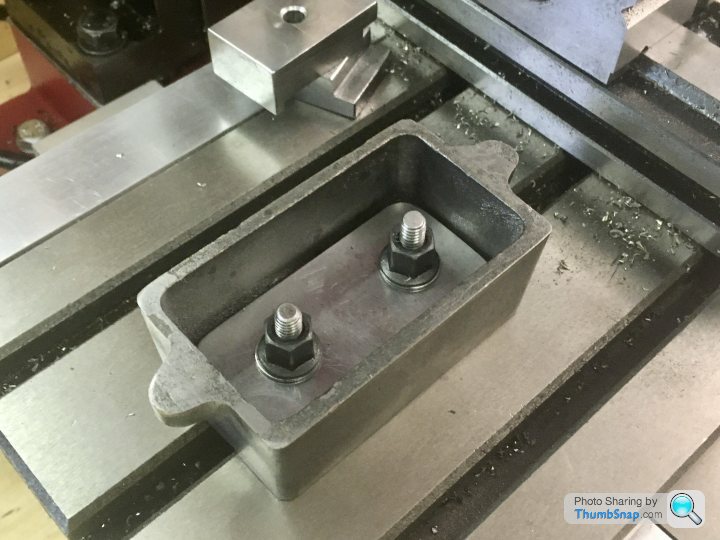
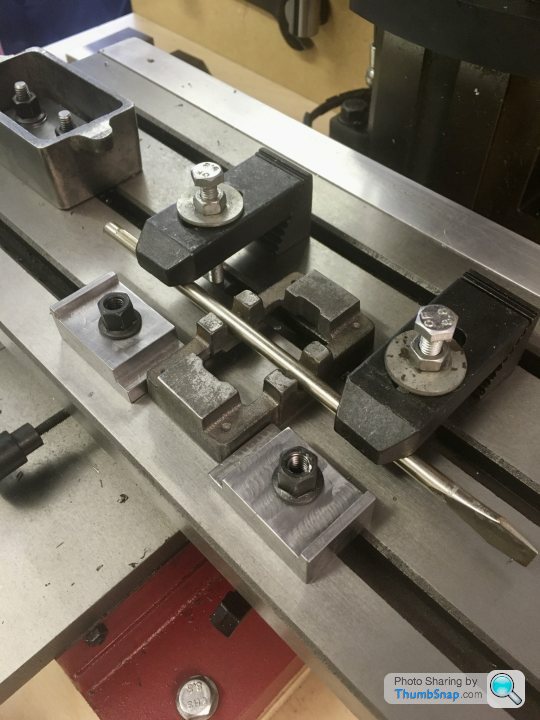
 , but no height dimension is on the drawings I got with the kit. Also, there is no centre distance given for the base lugs. I guess it doesn’t really matter for this part, but I think it would have been good practice to either dimension the height and centres, or at least put a note on the drawing; they still need machining, and how much ink did they actually save?
, but no height dimension is on the drawings I got with the kit. Also, there is no centre distance given for the base lugs. I guess it doesn’t really matter for this part, but I think it would have been good practice to either dimension the height and centres, or at least put a note on the drawing; they still need machining, and how much ink did they actually save?
